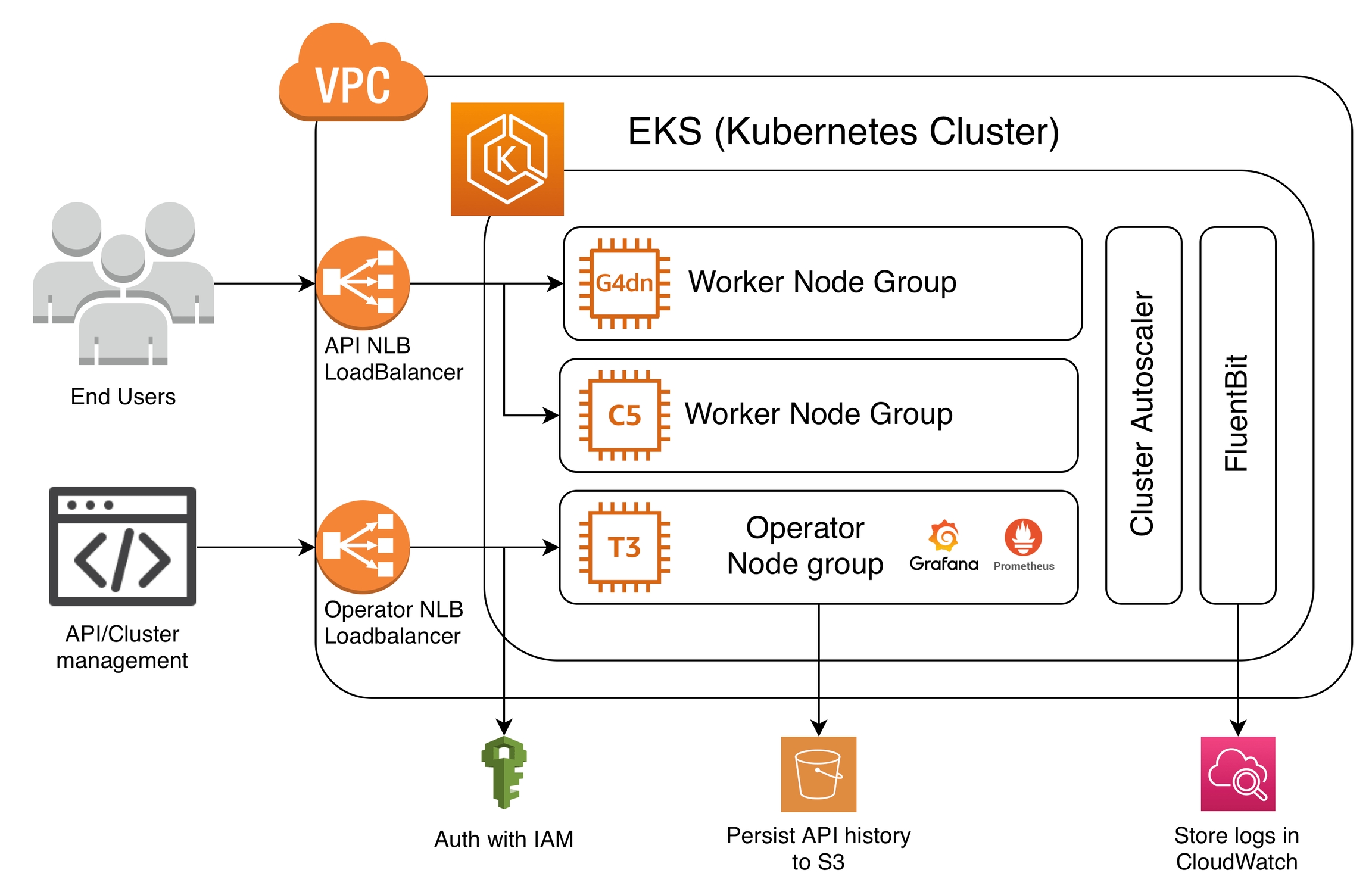Overview
Cluster
The Cortex cluster is an EKS (Kubernetes) cluster in a dedicated VPC on your AWS account.
Worker node groups
The kubernetes cluster uses EC2 autoscaling groups for its worker node groups. Cortex supports most EC2 instance types, and the necessary device drivers are installed to expose GPUs and Inferentia chips to your workloads. Reserved and spot instances can be used to help reduce costs.
Cortex uses the Kubernetes Cluster Autoscaler to scale the appropriate node groups to satisfy the compute demands of your workloads.
Networking
By default, a new dedicated VPC is created for the cluster during installation.
Two network loadbalancers (NLBs) are created to route traffic to the cluster. One loadbalancer is dedicated for traffic to your APIs, and the other loadbalancer is dedicated for API management requests to Cortex from your CLI or Python client. Traffic to the loadbalancers can be secured and restricted based on your cluster configuration.
Observability
All logs from the Cortex cluster are pushed to a CloudWatch log group using FluentBit. An in-cluster Prometheus installation is used to collect metrics for observability and autoscaling purposes. Metrics and dashboards pertaining to your APIs and instance usage can be viewed and modified via Grafana.
Deploying to the cluster
After a successful Cortex cluster installation, you can use the Cortex CLI or Python Client to deploy different types of workloads. The clients use AWS credentials to authenticate to the Cortex cluster.
Cortex uses a collection of containers, referred to as a pod, as the atomic unit; scaling and replication occurs at the pod level. The orchestration and scaling of pods is unique to the different types of workloads:
Realtime
Async
Batch
Task
Visit the workload-specific documentation for more details.
Architecture Diagram

Last updated